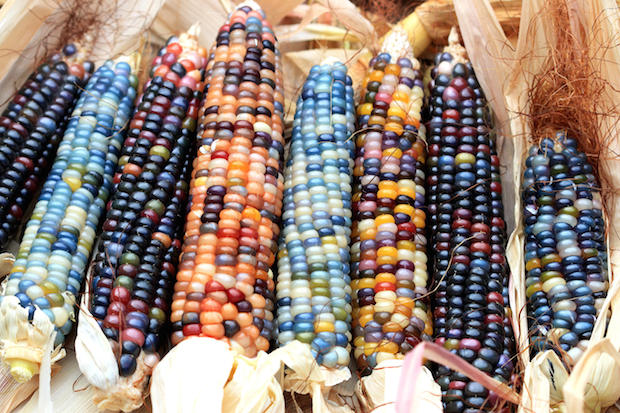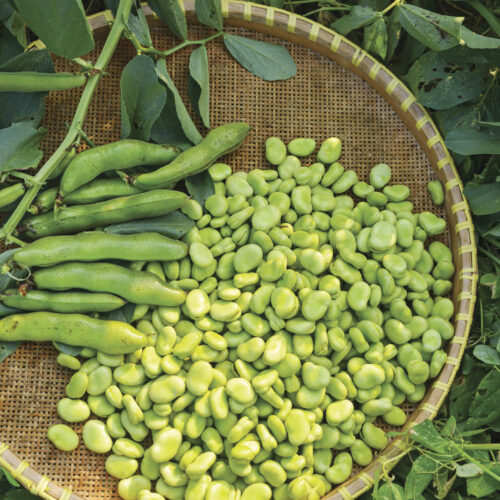Corn fights back
2018-08-01T14:00:01+10:00
The world of heirloom corn is worth investigating so you can grow them in your own backyard.
In 2012, a photo of a cob of corn was posted to Facebook. Big deal, right. Ho hum.
The thing is, this wasn’t any old cob of corn. It had translucent kernels in a spectacular rainbow of colours. It was so utterly unlike a standard yellow cob that the image went viral, and became a global sensation. Facebook groups and a website are now dedicated to its cultivation.
The corn in question is called ‘Glass Gem’. It was bred by Carl Barnes, a Cherokee man and part-time farmer who spent years crossing old maize varieties handed down from his ancestors, selecting the most colourful cobs to save and replant until he had developed a stable strain of seed that could reliably grow true to type.
Barnes sadly died in 2016, but not before ‘Glass Gem’ kick-started a global surge of interest in heirloom and open-pollinated corn varieties. Tasmanian business Seed Freaks, owned by occasional OG contributors Linda Cockburn and Trevor Wittmer, is one of a handful of Australian seed merchants growing ‘Glass Gem’ and making it available to enthusiastic home gardeners.
Cockburn says it’s just one of 22 varieties of corn she’s collected over the years, noting that they all derive from the teosintes, a group of ancient grass species that date back to the dawn of agriculture. When asked what motivates her passion for collecting heirlooms Cockburn is unequivocal.
“It’s the imperative to preserve our genetic diversity and history,” she says. “It awes me that the seeds we grow today have a history as long as 10,000 years, and were selected for drought tolerance, disease resistance, sweetness, size and flavour in what has been an unbroken chain.”
According to Cockburn, industrial agriculture has weakened the chain, causing a loss of diversity and resulting in the extinction of many food plants. Others have simply disappeared into obscurity.
“I’d like to be just a tiny bit of solder helping to keep the chain from breaking entirely,” she says.
Suggested cultivars
‘Anasazi’ A drought-tolerant sweet corn that is yellow when eaten fresh or multicoloured when allowed to dry. Produces two cobs on medium-tall plants.
‘Blue Hopi’ A blue flour maize preserved by Hopi people in the American southwest.
Mid-range grower to 2m with some drought tolerance. Ideal for making blue tortillas.
‘Painted Mountain’ A cold- and drought- tolerant flint variety from Montana that has gained in popularity due to its beautifully coloured cobs. Eat fresh or dry for cornmeal and popcorn.
‘Glass Gem’ The internet sensation is a spectacular flint corn that can be popped or ground into cornmeal. A tall grower reaching up to 3m.
‘Golden Bantam’ A shorter sweet corn growing to 1.5m and bearing 2–3 cobs per plant. Bears early at around 80 days.
‘Manning White’ A lusty grower to 3m that bears a single, large white cob per plant. Eat fresh, dry for flour or use for animal feed. Preserved since 1932 by a dairy farmer in the Manning Valley.
‘Onto’s Oval’ Brought to Australia from the US by Fred Koch, this is a favourite among popcorn enthusiasts that is described as “all puff, no rough”. Short plants to 1.5m bearing small, creamy white cobs.
For more organic growing ideas, get the latest issue of ABC Organic Gardener magazine here.






